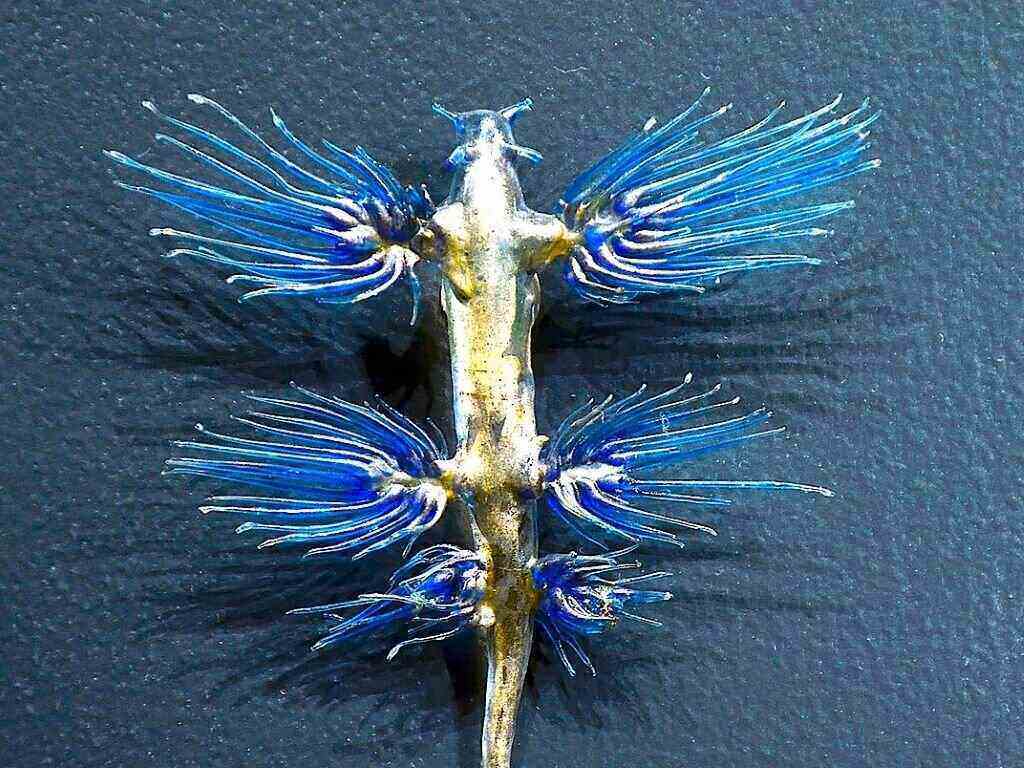|
Getting your Trinity Audio player ready...
|
![Blue Glaucus Unique Coloration Is Nature's Camouflage [Video] Blue Glaucus](https://thenewsschool.com/wp-content/uploads/2022/04/Blue-Glaucus-Unique-Coloration-Is-Natures-Camouflage-Video1-650x488.jpg)
The creature eats an array of prey but its favorite is the Portuguese Man o’ War. The Blue Glaucus takes on the toxins of the prey it consumes, therefore, it can use that venom to kill other prey or use against predators. It can be found in all oceans. It should not be touched if found. Symptoms of a venomous sting include nausea, vomiting, and physical pain.
![Blue Glaucus Unique Coloration Is Nature's Camouflage [Video] Blue Glaucus](https://chicagoleader.com/wp-content/uploads/2022/04/rsz_5480405423_0519ac620e_h.jpg)
It has a flat, tapered body with six appendages that branch out into 84 finger-like cerata. “Cerata are long, slender structures used to sting when hunting or when the Blue Glaucus feels threatened,” according to American Oceans. The teeth have a serrated edge and it has a “rasp-like tongue.” The sea slug moves slowly by swimming or it can move with muscle contractions or the millions of hairs on its underbelly.
The Blue Glaucus is a hermaphrodite, it produces both sperm and eggs, however, it needs to mate to lay eggs in the carcasses of its prey or in any floating mass they come across. They release a string of 10-20 eggs. When mating, the creatures must be careful not to sting each other.
They are considered pelagic fish. The sea snail lives in ocean waters that are neither close to shore nor near the ocean floor. The Blue Glaucus can be found in oceans around the world. They enjoy floating on the surface of the water. They have a gas-filled sac to store air bubbles in to maintain buoyancy. Sometimes they will float to the sand on the floor of the ocean. They allow the wind and the current to carry them and sometimes they end up in places they should not be such as the shore. This incidence has occurred more frequently in recent years.
Written by Jeanette Vietti
Sources:
American Oceans: Blue Glaucus
Oceana: Blue Glaucus
YouTube: Facts: The Blue Dragon
Featured Image by Vasil Courtesy of Wikimedia Commons – Creative Commons License
Inline Image Courtesy of lostandcold’s Flickr Page – Creative Commons License



